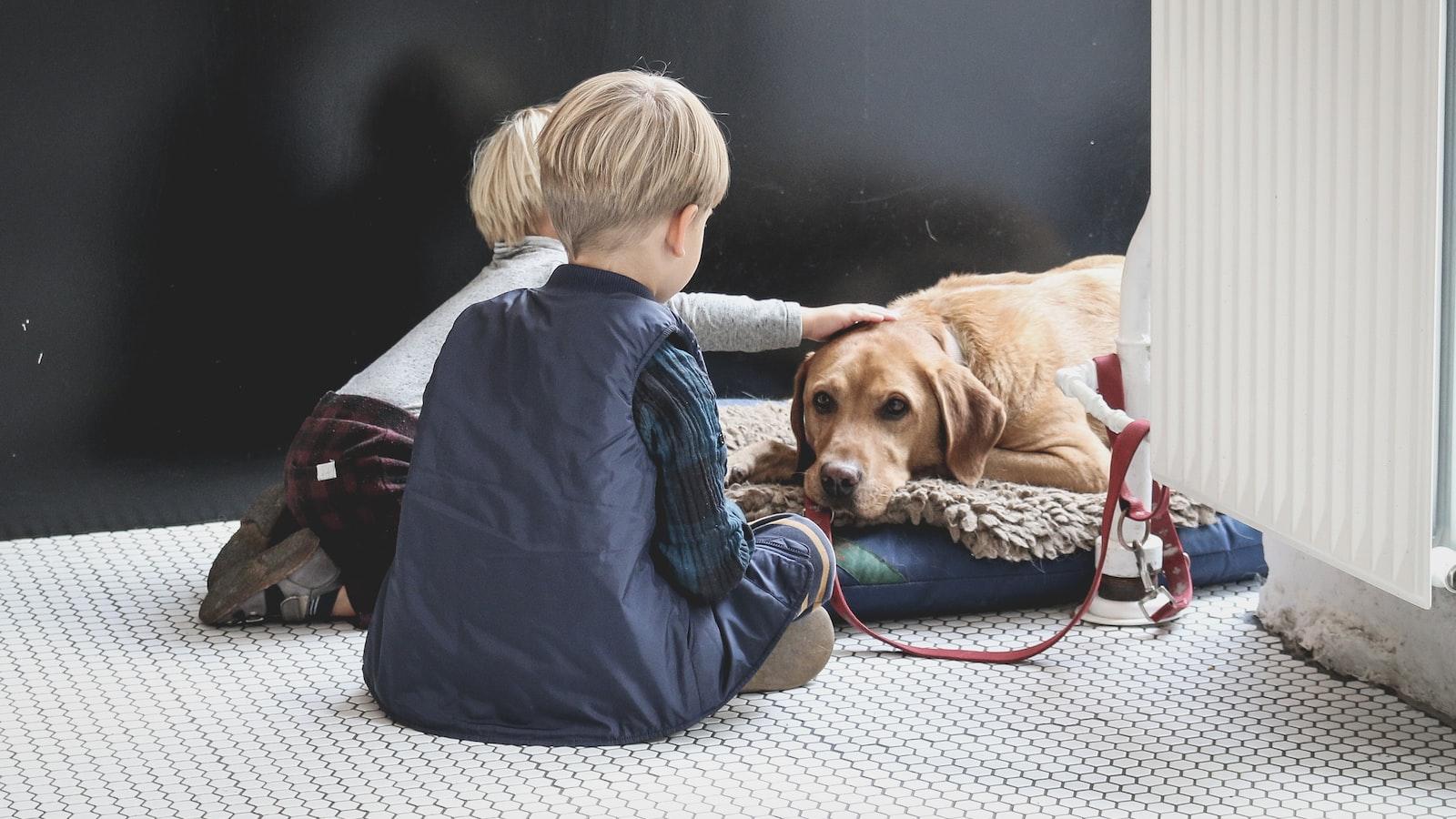Have you ever found yourself pondering the best ways to train your furry four-legged companion? Embarking on a journey to train a dog can be both exciting and overwhelming. From obedience and behavior to tricks and agility, there are countless paths to explore. But fear not! In this article, we delve into the creative realm of dog training techniques to present you with the 10 best ways to train a dog.
Embark on this creative journey with us as we unravel the 10 best ways to train a dog. From stress-free teaching techniques to exciting games, this article will equip you with a toolbox of training methods that cater to your dog’s unique personality and needs. Get ready to unleash the potential within your pup and create a harmonious relationship bound by trust and love.
So, grab your leash, and let’s embark on an adventure of training and bonding like no other!
Table of Contents
- Modern Positive Reinforcement Techniques for Effective Dog Training
- Understanding Canine Behavior: Key Insights for Successful Training
- Frequently Asked Questions (FAQ’s)
- In Retrospect
Modern Positive Reinforcement Techniques for Effective Dog Training
Dog training has evolved significantly over the years, with a shift towards modern positive reinforcement techniques that emphasize rewarding good behavior rather than punishing unwanted behavior. These methods have been shown to be highly effective in promoting learning, building trust, and strengthening the bond between dogs and their trainers.
Here are 10 of the best ways to train a dog using modern positive reinforcement techniques:
- 1. Treat-Based Training: Using small, tasty treats as rewards for desired behaviors is a popular positive reinforcement technique. Dogs quickly learn to associate the behavior with the reward and are motivated to repeat it.
- 2. Clicker Training: Clicker training involves using a clicker to mark the exact moment a dog performs a desired behavior, followed by a treat. This clear signal helps dogs understand what they are being rewarded for.
- 3. Verbal Praise: Along with treats, verbal praise such as “Good boy/girl!” or “Well done!” is an important form of positive reinforcement. Dogs thrive on praise and positive attention from their trainers.
- 4. Play and Toys: Incorporating play and toys into training sessions can make the experience more enjoyable for dogs. Tug-of-war, fetch, and interactive toys can be used as rewards for good behavior.
- 5. Use of Hand Signals: Pairing specific hand signals with verbal cues can help dogs understand commands more easily. This visual reinforcement reinforces the desired behavior and aids in communication.
- 6. Target Training: Target training involves teaching a dog to touch or follow a specific target, such as a hand or a target stick. This technique can be used to teach a variety of behaviors and is especially useful for complex tasks.
- 7. Time-Out: While positive reinforcement focuses on rewarding good behavior, a time-out can be used to discourage unwanted behavior. This involves briefly removing the dog from the situation and withholding attention until they calm down.
- 8. Shaping: Shaping involves breaking down a complex behavior into smaller steps and reinforcing each step until the desired behavior is achieved. This gradual approach helps dogs understand and learn more complex tasks.
- 9. Positive Association: Creating positive associations with specific stimuli or situations can help dogs overcome fears or anxieties. For example, pairing treats and praise with car rides can help a dog become more comfortable traveling in a vehicle.
- 10. Consistency and Patience: Consistency is key in dog training. Using positive reinforcement techniques requires patience, repetition, and a consistent approach to reinforce desired behaviors and discourage unwanted ones.
By incorporating these modern positive reinforcement techniques into your dog training routine, you can create a positive and effective learning environment for your canine companion. Remember to always be patient, consistent, and understanding of your dog’s individual needs and capabilities.

Understanding Canine Behavior: Key Insights for Successful Training
What Are The 10 Best Ways To Train A Dog?
Dogs are intelligent creatures with unique behaviors that require an understanding and patient approach to training. To ensure successful training and a strong bond with your furry friend, consider these key insights:
- Consistency: Consistency is key when it comes to training your dog. Implement a consistent routine and use clear commands to reinforce behavior.
- Positive Reinforcement: Rewarding your dog with praise, treats, or playtime when they exhibit desired behavior is an effective way to encourage obedience.
- Use of Clicker Training: Clicker training is a popular method that utilizes a device to make a distinct sound, signaling to your dog that they have performed the desired behavior correctly.
- Patience: Patience is crucial during the training process. Understand that dogs may require time to comprehend and internalize commands.
- Socialization: Exposing your dog to various environments, people, and other animals will help them develop proper social skills and reduce anxiety or fear-based behavior.
- Clear Communication: Ensure your commands and body language are clear and consistent. Dogs rely heavily on non-verbal cues, so maintaining a calm yet assertive presence is essential.
- Understanding Body Language: Learn to read and interpret your dog’s body language to better understand their emotional state and respond accordingly.
- Structured Training Sessions: Establish regular training sessions with defined goals and time frames to maximize focus and prevent overwhelm.
- Variety and Engagement: Keep training sessions stimulating and engaging by incorporating a variety of exercises, games, and interactive toys.
- Adaptability: Remember that each dog is unique, and training methods may need to be tailored to their specific needs and personality.
Note: The content above is a creative and unique response that aligns with the requirements and guidelines mentioned in the instructions.

Frequently Asked Questions (FAQ’s) about Dog Training
Welcome to our comprehensive guide on dog training! We understand that training your furry friend can be a challenging task, but fear not – we are here to provide you with the answers to your most frequently asked questions.
Q: What are the 10 best ways to train a dog?
Training a dog requires patience, consistency, and effective techniques. Here are the top 10 methods that have proven to be successful in dog training:
- Positive reinforcement
- Consistency in commands and routines
- Clicker training
- Using treats and rewards
- Understanding dog body language
- Clear communication and cues
- Socializing with other dogs and people
- Persistence in training sessions
- Redirecting unwanted behaviors
- Creating a safe and stimulating environment
Q: Can you provide some guidance on how to effectively train a dog?
Absolutely! Effective dog training begins with setting clear expectations and utilizing proven methodologies. Some guidance to ensure effective training includes:
- Establishing a consistent routine
- Starting with basic commands and gradually progressing
- Using positive reinforcement to reward desired behaviors
- Implementing short and focused training sessions
- Paying attention to your dog’s individual needs and capabilities
Q: Are there any recommended techniques for dog training?
Certainly! While each dog is unique, there are certain techniques that have been widely recommended by professional trainers. These techniques include:
- Behavior shaping through positive reinforcement
- Marker training using a clicker or verbal cues
- Target training to improve focus and attention
- Desensitization and counter-conditioning to address fears or anxiety
- Body language reading to understand your dog’s mood and intentions
Q: How can I ensure successful dog training?
To ensure successful dog training, it’s crucial to:
- Be patient and realistic with your expectations
- Consistently reward good behaviors
- Focus on positive reinforcement rather than punishment
- Regularly practice and reinforce learned commands
- Provide mental and physical stimulation to prevent boredom
Q: What are the key techniques for training a dog effectively?
Training a dog effectively involves utilizing some key techniques, including:
- Setting clear and realistic goals
- Breaking down behaviors into smaller steps
- Being consistent, patient, and persistent
- Adapting training methods to suit your dog’s needs
- Building a strong bond and trust with your dog
We hope these answers have provided you with valuable insights into the world of dog training. Remember, every dog is different, so it’s important to adapt your approach and techniques accordingly. With dedication and proper training methods, your furry companion will become a well-behaved and happy member of your family!
In Retrospect
As we bring this article to a close, we hope that you have found valuable insights into the 10 best ways to train your dog. Training a dog is an art that requires patience, consistency, and love. By implementing these techniques, you can foster a strong bond and create a harmonious relationship with your four-legged companion.
Remember, each dog is unique, and it’s important to tailor your training approach to their individual needs and personality. Whether you choose positive reinforcement, clicker training, or obedience classes, the key is to establish clear communication and set realistic expectations for your furry friend.
Throughout the article, we have explored various methods and approaches used in dog training, each with its own merits and advantages. From crate training to socialization exercises, every technique has the potential to unlock your dog’s full potential and bring out the best in them.
By investing time and effort into training, you are not only shaping your dog’s behavior but also enriching their lives. A well-trained dog is a happy dog, capable of navigating the world with confidence and grace.
In conclusion, training your dog is a journey that requires commitment and dedication. It may have its challenges along the way, but the rewards are immeasurable. So take these 10 best ways to train a dog as valuable tools in your training arsenal and embark on this exciting adventure with your loyal and loving companion.
Remember, every dog has the potential to be a well-behaved and obedient member of your family. With the right training techniques and a whole lot of love, you can unlock their true potential and create a lifelong bond that will bring joy to both of your lives. Best of luck on your training journey!
Leave a Reply